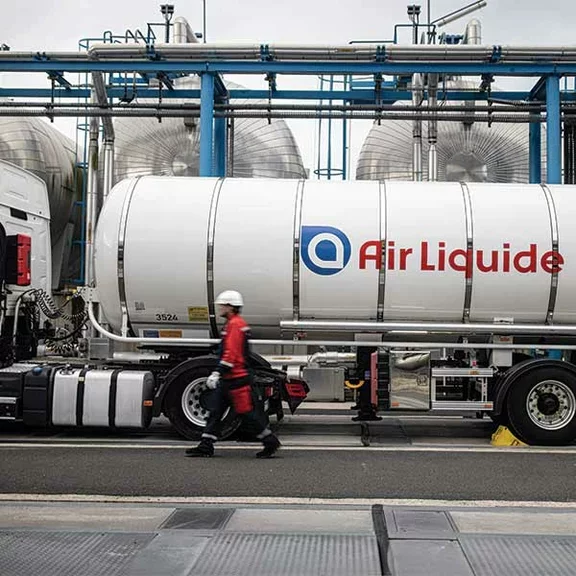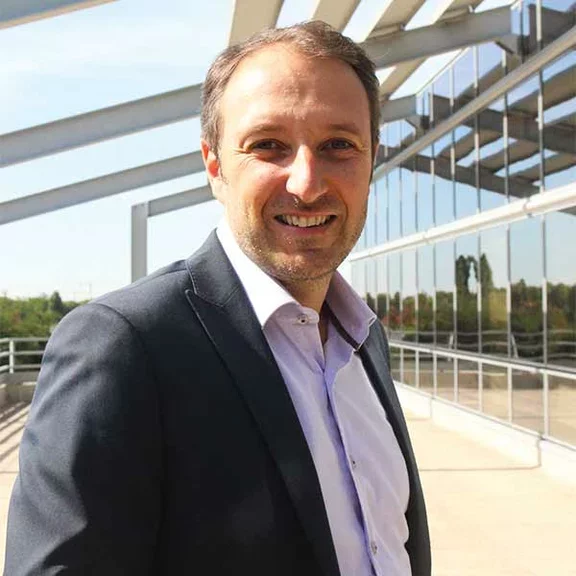Capturing CO₂, an essential solution for decarbonizing industry
Published on March 29, 2024
3 minutes

More than 20% of the world’s CO2 emissions come from industry. Today, the challenge is to rapidly deploy concrete solutions that will significantly reduce these emissions. Among the technologies already available, carbon capture and sequestration (CCS) is a key solution for decarbonizing the industries with the highest emissions and those most difficult to decarbonize, such as cement, metallurgy, refining, and chemicals. These are also the sectors where this technology will have the greatest impact, as CO2 concentrations are the highest.
The principle consists in capturing CO2 emissions at the source, treating and purifying them, and then recycling or sequestering them in permanent geological storage. Large-scale CCS projects are being developed around the world, particularly in Europe and the United States, which together account for over 70% of global projects. Air Liquide is one of the leaders in this field, with its proprietary Cryocap™ technology, which captures, purifies, and liquefies CO2 before it is transported to the sequestration site.
Air Liquide is involved in a number of large-scale CCS projects, particularly in Europe. In the Netherlands, where the government has set the ambitious target of reducing the country’s greenhouse gas emissions by 95% by 2050, the Group is involved in the Porthos project, the Netherlands’ largest CO2 emissions reduction program. For Air Liquide, it consists in decarbonizing its own facilities by installing a CryocapTM unit at its hydrogen production site in Rozenburg, near Rotterdam. The project also includes the construction of a pipeline which, from 2026, will transport the CO2 emitted by several local plants through the port of Rotterdam to the North Sea, 20 km off the coast, where it will be sequestered at a depth of 3,000 meters in a depleted natural gas field.
In all, the Porthos project will contribute to reducing the emissions by 2.5 million tonnes of CO2 per year, which represents about 10% of the CO2 emitted by industrial activities in Rotterdam. Air Liquide is also involved in the K6 project, a partnership with cement manufacturer EQIOM. The aim is to make the Lumbres factory in northern France the first carbon-neutral cement plant in Europe, by capturing almost 8 million tonnes of CO2 in the first 10 years of operation, thanks in particular to the Cryocap™ technology. In the same spirit, Air Liquide will also contribute to decarbonizing the Lhoist lime production plant in Réty, in the north of France.
Finally, as part of the D’Artagnan project, the CO2 captured at the two plants will be transported to a temporary storage platform at the port of Dunkirk, from where it will be shipped to be then sequestered between 1,000 and 2,000 meters below the North Sea. By 2027-2028, the D’Artagnan project will contribute to the reduction of emissions by 1.5 million tonnes of CO2 per year.
The Group also participates in many other initiatives of the kind in Europe, such as the Kairos@C, Antwerp@C, ECO2 Normandie and Callisto projects. These large projects show Air Liquide’s expertise and commitment to providing solutions to decarbonize both its own and its customers’ assets.
12 CCS projects in which Air Liquide is involved in Europe
Up to 98% of CO₂ captured thanks to the Cryocap™ technology
“To best meet our customers’ needs, we draw on our more than 15 years of experience in this field. As a result, we can offer a portfolio of innovative technologies guaranteeing very high capture rates while optimizing the energy efficiency of installations.“
Florian Gautier
Director of Energy Transition for Large Industries activity at Air Liquide



